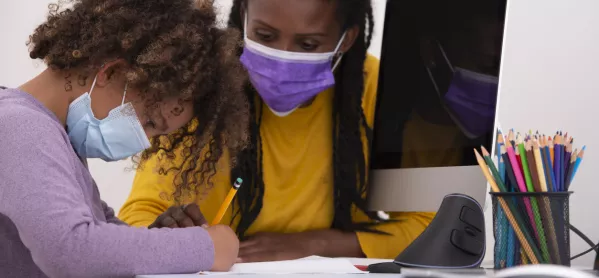- Home
- Revealed: How heads think DfE could reopen schools
Revealed: How heads think DfE could reopen schools

Prioritising certain year groups, using arrows to indicate one-way traffic in corridors and having teachers move rooms while pupils stay put are some of heads’ suggestions for how to safely end the school shutdown.
A consultation document seen by Tes reveals leaders’ preferences for how schools should return, in response to series of possible options set out by the Department for Education.
The news comes on the same day that the UK’s largest education union revealed its five tests for reopening schools, and as Tes published survey results showing concerns over the safety of school staff.
Revealed: School opening options the DfE is considering
Coronavirus: Teachers set 5 tests for reopening schools
Exclusive: School social distancing ‘impossible’, say 74% of staff
Questions framed by the DfE were put to heads by the Association of School and College Leaders, as part of a survey of its 19,000 members at the beginning of this week.
Coronavirus: How will schools reopen?
The union received 2,000 responses, which were summarised and fed back to the department at a meeting with the UK’s major teaching unions today.
Asked their “preferred model” for a phased reopening process, state secondary school leaders expressed a “distinct preference” for specific year groups to return first - namely those in Years 10 and 12.
A “significant minority” said they preferred a rota system, as they had concerns about “gaps in knowledge” and “implications that education is more important at some ages than others”.
Meanwhile, those in state primary schools were “more evenly split” - with 45 per cent in favour of prioritising particular year groups and 55 per cent preferring a rota-based system.
The DfE also asked how social distancing might be implemented in schools, and how this could vary depending on the setting.
Few leaders thought social distancing could be enforced in schools “in any meaningful way, beyond phased attendance and staggered timings”, according to the ASCL.
But heads did highlight a series of measures that may enable “some degree of physical distancing”, including:
- Rotas (many respondents suggested they could only realistically have a third or fewer of pupils in a year group in school at any one time).
- Variations in timings, such as staggered starts and finishes, and different break times.
- Pupils staying in one room, with teachers moving between them.
- Distance markers - arrows indicating one-way systems, queuing marks, etc.
- Increased numbers of supervisory staff to enforce social distancing.
- Providing pupils with individual sets of resources to avoid sharing - pens and pencils, paper, books, etc.
Asked if there were an announcement about reopening schools and a “three-week lead-in period” given, what specific actions and decisions schools and trusts would be required to take in that time, leaders said it is “imperative” that the government “articulates clearly the aim of gradually reopening schools”.
Most members who responded to the consultation “felt that a three-week lead-in period was appropriate”, according to ASCL.
But “almost all” of those surveyed expressed the view that following a “normal” timetable would be “almost impossible”.
Leaders said they would require “strong, evidence-based direction” - “not guidance” - on “many issues related to safety”, including:
- What social distancing in schools means, and what the expectations are on schools to achieve this
- How staff and pupils can protect themselves from risk as much as possible - eg, by keeping in small groups that don’t mix.
- Which staff will and won’t be expected to be in school.
- What personal protective equipment (PPE) will be provided in different settings, and how it will be supplied.
- What testing and contact tracing procedures will be in place.
The ASCL also said a “major concern” for leaders would be ensuring that “sufficient staff can be on-site”, and that “those who are on-site are as safe as possible”.
It added that clarity is required on whether staff-to-pupil ratios will be relaxed during this period.
The DfE also asked how far it should mandate who should be in school, and how much should schools be able to decide for themselves.
This question drew “mixed” views with “nuanced” responses, according to the ASCL, but most leaders called for “clear government directions (not guidance)” on who should be prioritised, and why, with individual settings “given the autonomy to work out how they will implement this in their own context”.
Geoff Barton, general secretary of the ASCL, said: “The meeting with the Department for Education today was very constructive, and we were pleased to be able to feed back the views of our members on the process for reopening schools, whenever that may be.
“There are a number of issues which will need to be resolved ahead of any reopening, and two critical matters will be how to manage social distancing, and the question of protective equipment and in what circumstances it may be needed.
“This is still a work in progress, and will clearly have to be guided by scientific and public health advice in order to ensure that staff, pupils and parents can have confidence that it is safe to return to school.”
Keep reading for just £1 per month
You've reached your limit of free articles this month. Subscribe for £1 per month for three months and get:
- Unlimited access to all Tes magazine content
- Exclusive subscriber-only stories
- Award-winning email newsletters



